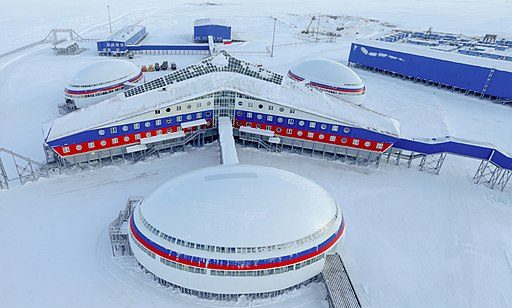
During the Cold War, the Soviet Union kept a significant portion of its nuclear-weapons arsenal in the Arctic, carried out extensive nuclear weapons testing at Novaya Zemlya, and used its waters as nuclear dump sites. Russia’s inability to effectively deal with this nuclear legacy created the potential for an environmental catastrophe and became a major post-Cold War challenge.
Today, hand in hand with the country’s development of the Northern Sea Route (NSR), a new generation of nuclear reactors is coming to the Arctic. The number of nuclear-powered submarines and icebreakers is growing, the first floating nuclear power plant was deployed in the Chukotka region last year, and the Arctic waters continue to be used as a testing site, most recently for Russia’s new nuclear-powered cruise-missile and underwater drones. According to some estimates, the Russian Arctic will constitute the most nuclearised waters on the planet by 2035.
Russia’s poor record on nuclear management, combined with its growing Arctic ambitions, could lead to dangerous outcomes. A potential incident involving nuclear contamination could severely harm the Arctic marine environment and population alike and poses a serious threat to Russia, Europe and potentially the United States.
In this policy brief, Sherri Goodman and Katarina Kertysova explore the growing risks of nuclear incidents in the Russian Arctic and propose concrete transparency and confidence-building measures to limit them.
Download the Policy Brief here
The opinions articulated above represent the views of the authors, and do not necessarily reflect the position of the European Leadership Network (ELN) or any of the ELN’s members. The ELN’s aim is to encourage debates that will help develop Europe’s capacity to address pressing foreign, defence, and security challenges.
Image: The Barents Observer / Google Earth



